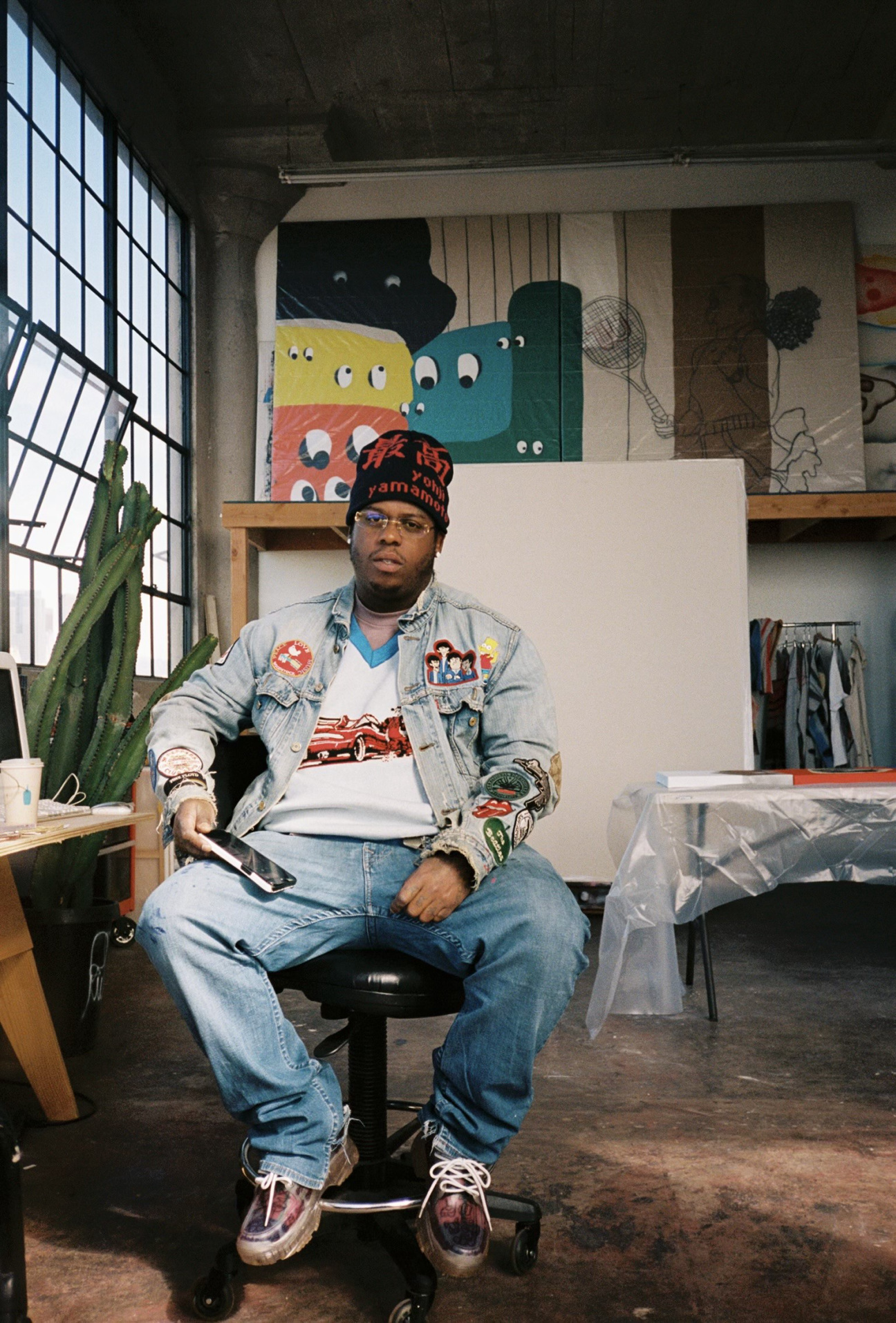
Jahlil Nzinga landed his latest gig by answering an e-blast from his landlord. GBA (Guilty By Association), a digital arts platform co-founded by Derek Wiggins and Karen Wong with its headquarters in Brooklyn, was on the hunt for artists to join their program. The criteria: “Your work is weird, or beautiful, or undefinable—possibly all three. You care how your story is told.”
That description certainly applies to Nzinga, who got his start as a rapper in the hip hop group The Pack before transitioning to visual arts in the late 2010s. He is best known for artwork that blends distorted figures with images of class and status in America, from cars to gold watches and balls teed up at the golf course. He also produces furniture and fashion under the umbrella of Nzinga Studios. Despite his disparate output, he maintains tight control over everything linked to his name.
After being chosen by GBA, the artist mounted a solo exhibition, “Fast Freedom,” at its Brooklyn outpost. The show includes seven large pieces and a series of smaller scale paintings made for the occasion. After the grand opening, Nzinga sat down with CULTURED to discuss the Ferrari-filled evening and how he manages to reinvent himself over and over.
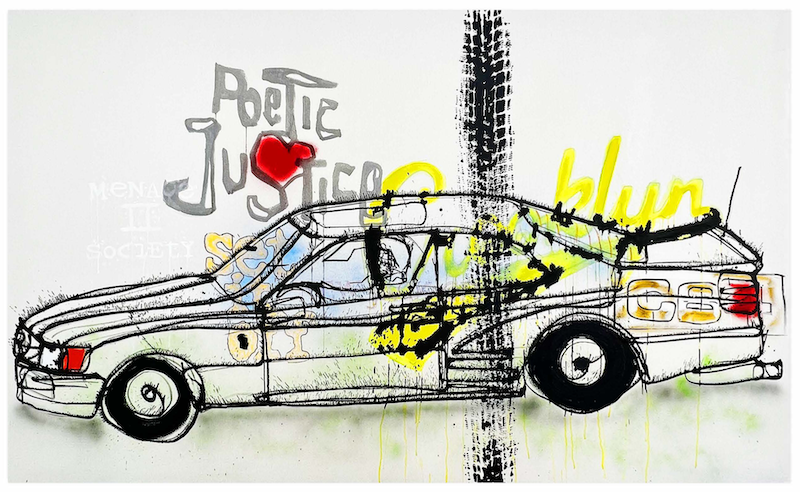
CULTURED: How did the show with GBA come about?
Nzinga: I got studios in Los Angeles, and there was an open call for artists. Canyon Castator, who runs the building, sent a blast out to everyone. You could win this situation with GBA, which has a very generous split with the artist. That was attractive to me. So I entered, and they picked me. We made something special happen. Go see it in New York: 197 Bond Street.
CULTURED: What inspired you to start making art?
Jahlil Nzinga: I started making music when I was really young, fresh out of high school, straight to a nice deal, and I did tour and TV, all the stuff. Music just ran its course—for me, it wasn’t a forever thing. It was time to keep creating. I chose art because … I wanted the responsibility of it all. With music, I’m in a group, signed to a label with distribution and A&R. By the time the art that I would produce would make it to the world, it was touched by 85 people. It was arguably not mine. I wanted to be the captain. I wanted to sink with the ship.

CULTURED: Being involved in every single stage of the process is really important to you. Do you still like to take on collaborations? How does the process work?
Nzinga: Too often, people collaborate and they’re trying to stand out. I want to collaborate in a way where you don’t know what either party did—it just came out beautiful and that’s all we care about. I think people collab now and they want to be like, “Yeah, I did this part and this is what I’m responsible for.” That just defeats the whole purpose.
CULTURED: On Instagram, you posted videos of rolling up to the GBA opening in a Ferrari and hitting Nobu afterward. How was that day for you?
Nzinga: The opening was amazing. It was really important to me to be in Brooklyn. Too often, the art isn’t accessible to people on that side. You gotta go to Tribeca to see something. I just wanted to bring some opulence to Brooklyn. I got a lot of people in the community that really appreciated that we put that Ferrari outside. New York is a big place. It’s hard to travel, it’s hard to get places, but everyone deserves to see it.
CULTURED: A thread that runs through your work is the idea of coming up in the world, getting access to luxury, and entering white spaces. Why are you interested in exploring that narrative?
Nzinga: This world is a crazy place, but there’s nothing off limits. That’s how I live. Why not go play lacrosse? I played lacrosse in high school. I don’t have to not do that because another race predominantly does that. You should touch anything anywhere, and experience everything. That’s why travel is there. Hopefully I can encourage other people to cross lines, go there, and be an inspiration for other people to come in. That’s what I’m trying to do: make everything for everybody.
CULTURED: Cars are also featured heavily throughout. Did you grow up a car guy, or do they serve as a symbol of a certain lifestyle?
Nzinga: A car is a piece of art. There’s a team of artists that make this thing just for me to travel somewhere. It’s super reminiscent of a human body. So much goes into making us, and there’s so much that makes us work, and when you see a car rolling down the street, you forget there’s a whole engine there, pistons firing. There’s a whole universe in that car. I like vehicles of opulence because I feel that that’s what represents me. We’re all vehicles. We’re all trying to get somewhere. Just make sure you enjoy the ride.
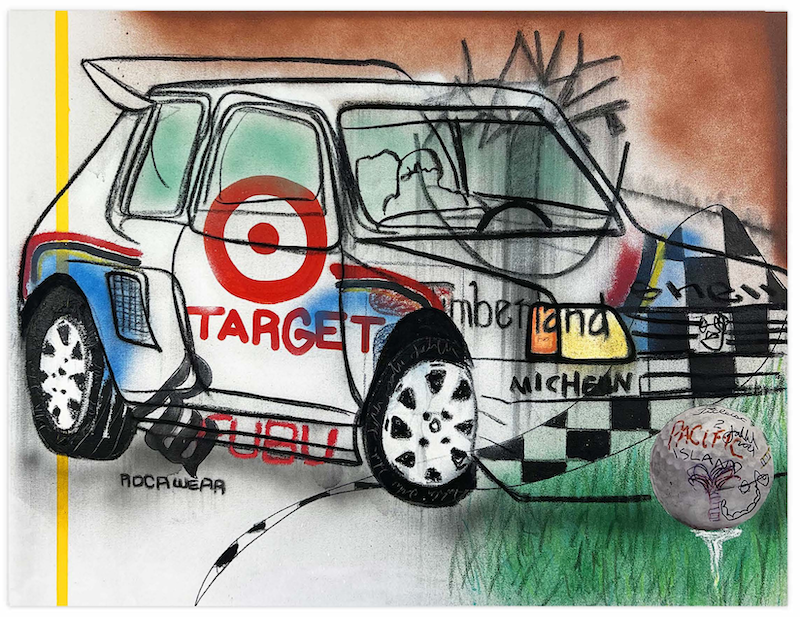
CULTURED: You have the Target logo splashed over a car in one piece and recognizable fashion items spotlighted in your object paintings, like the Oakley OVERTHETOP sunglasses. How do you weave these existing commercial brands into the brand you’re building for yourself?
Nzinga: I remember going to Target, being younger, and no diss to Target, but being like, “I don’t wanna go to Target anymore. I wanna try new stores.” These are things that have stood out to me along my ride. Like the Timberland logo—I remember always wanting a pair of Timberlands, the most expensive boots you could get. I saw the Timbs on the East Coast because my people in New York were wearing them. These are things that helped my mind travel. It’s a part of my universe.
CULTURED: With your fashion drops from the past few years—series of sweaters, shorts, hats, and more printed with your artwork—do you approach it in a different way? An item of clothing is used quite differently than a visual work, even if they’re both artistic endeavors.
Nzinga: Too often, [there are] situations like this where an artist does some clothing, a whole team comes in, and you lose the core of what it was. I’m doing it in a way where it’ll never not be me. I did some things in Miami for Basel and they went really well. The people have spoken; they want some more from me. I’m not trying to jump in and become like, “Oh, art’s done. I’m a full designer.” No, this art is just able to produce other things that are art. That’s how you get chairs from me. That’s how you get mirrors. I’m doing rugs right now. It expands and it seeps, and it’s going everywhere.
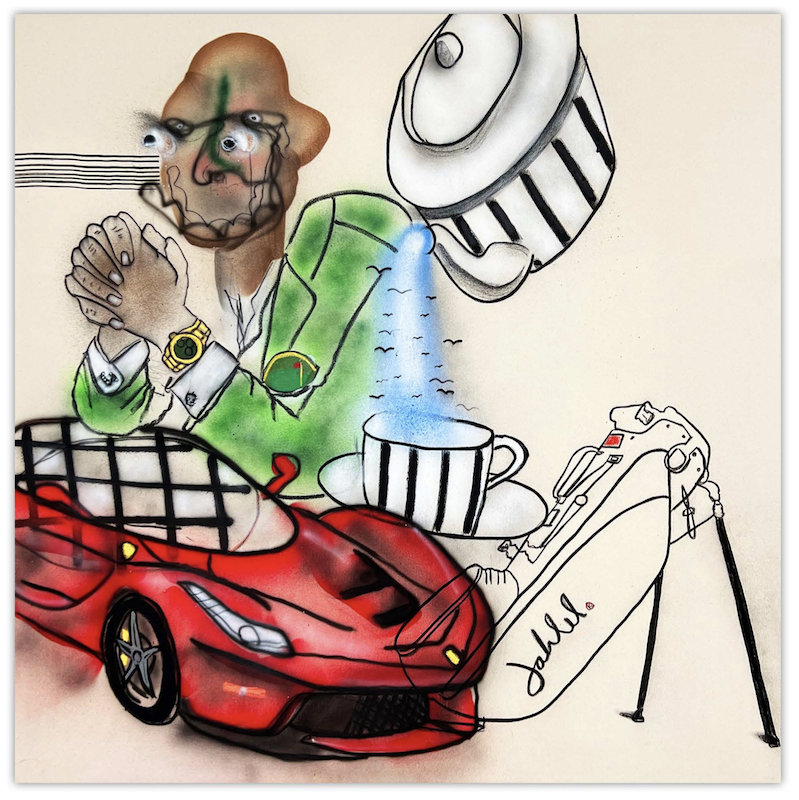
CULTURED: Do you have anything else on the horizon?
Nzinga: I just wanna give a shout out to all the artists that I’m currently trying to collect and I respect. Shout out Lauren Halsey, Henry Taylor, Jack Kabangu, Olaolu Slawn, T-Rex Global, Landon Pointer, Chito, Travis Fish, Julian Pace, Ken Taylor Reynaga, Brandon Deener, Mr. StarCity, Sol Summers, Devon DeJardin, Trevor Andrew, Mia Scarpa, and Hidji World. I just wanna say those artists’ names because they should get some shine, and I’m always trying to spread that light. If y’all like what I got going on, or if you don’t like what I go on, look at that list; you’ll find something you love.
“Fast Freedom” is on view by appointment through June 20, 2023 at 197 Bond Street in Brooklyn.




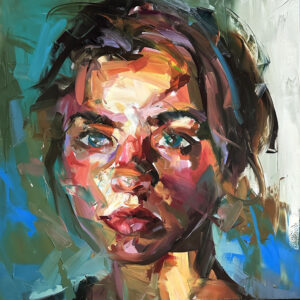





 in your life?
in your life?

